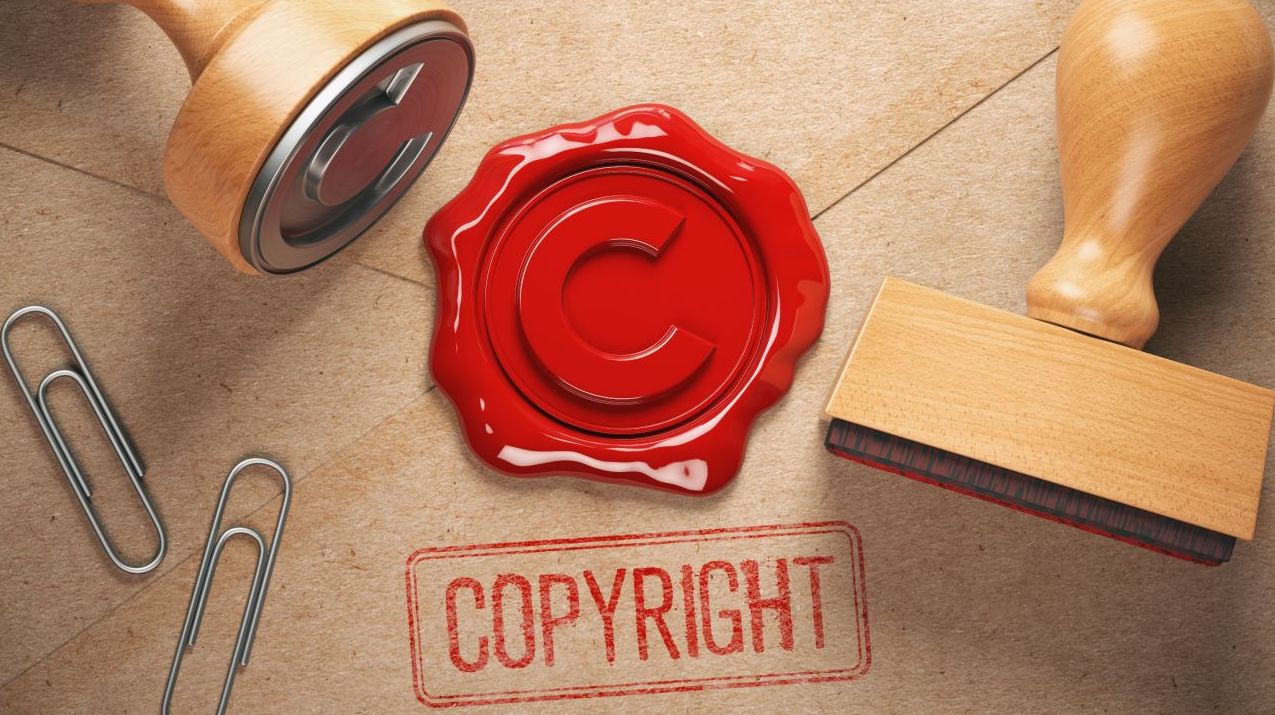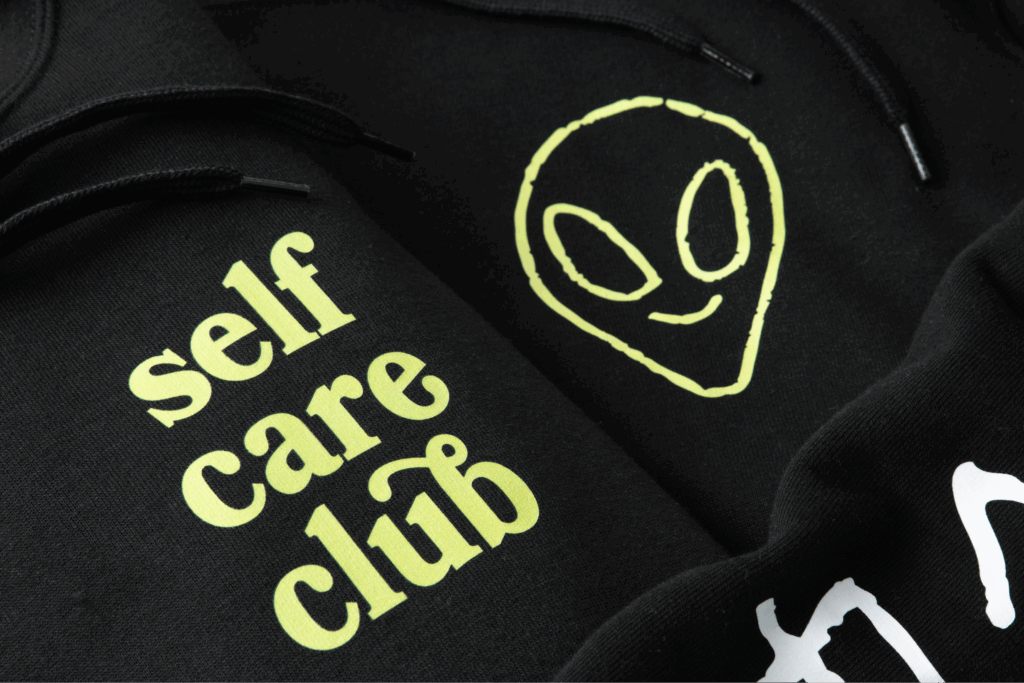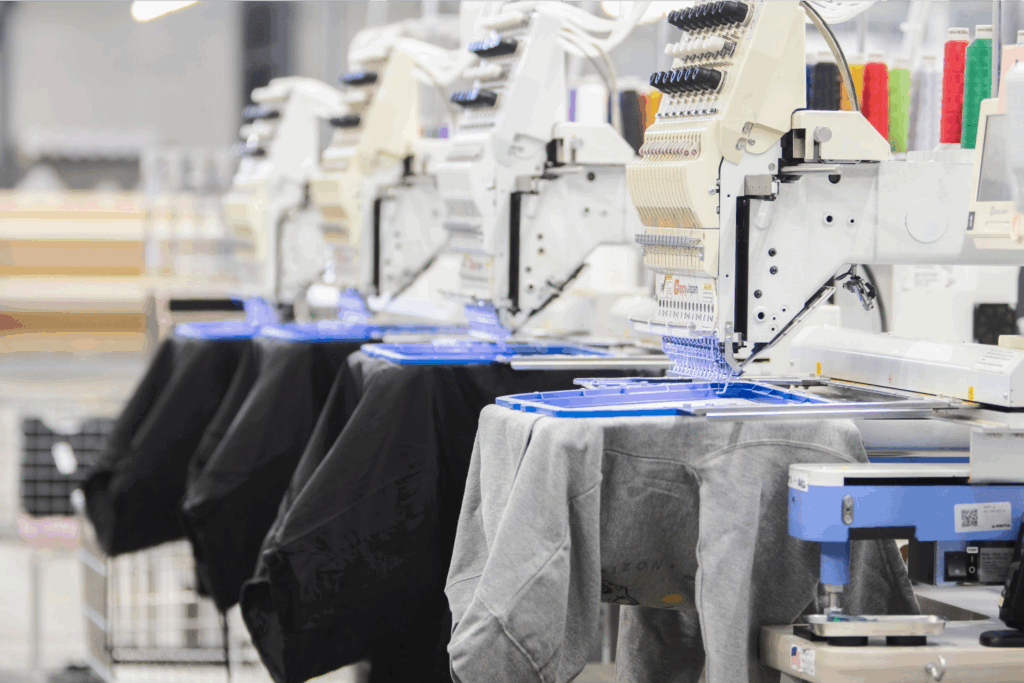Start a print-on-demand business today
Copyright laws are essential for protecting creators’ rights and ensuring that artists can monetize their work without fear of infringement. Understanding these laws is crucial for avoiding legal issues when creating custom t-shirts, as the line between finding inspiration and unintentionally copying someone else’s work can be blurry.
In this guide, we’ll explore the basics of copyright, fair use, and the legal permissions you need to t-shirt design safely.
What is copyright?
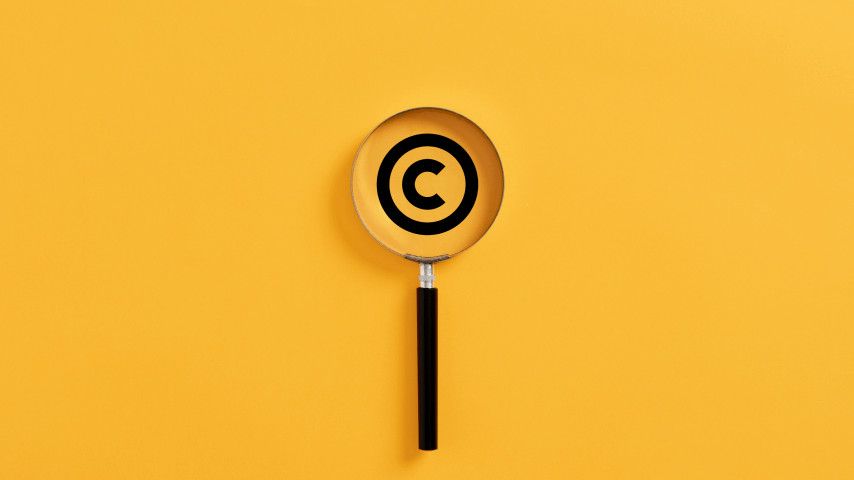
Copyright can be defined as a type of intellectual property that includes copyright, patents, and trademarks – the tangible results of creativity. The right to copy simply means that only the owner of a work has the right to monetize and distribute it.
Note that copyright does not include ideas, concepts, rules, or methods of action. It also doesn’t include things that lack a creative spark – names, short phrases, titles, slogans, national symbols, lettering, coloring, and lists of contents or ingredients.
To automatically receive copyright protection, a work must be fixed. Works are fixed when they are captured in a permanent medium and can be reproduced.
Fixed works include writing a script, taking a photo, composing music, and designing graphics.
Copyright protection usually lasts throughout the author’s lifetime, plus a number of years (usually decades) based on the type of work and method of creation. During this time, copyright protection provides the following exclusive rights to the owner and their authorized parties:
- Reproduction of the work as copies or phonorecords
- Creative derivative works based on the original
- Distribute copies of the work through sale
- Perform or display the work in other media
What is copyright infringement?

Copyright infringement occurs if a third party uses or reproduces copyrighted materials, in other words – someone else’s work – without the copyright holder’s express permission.
A severe copyright infraction may necessitate a takedown notice or other unpleasant legal issues.
Copyright breach violations occur throughout media, for example, bootlegging movies in theaters, claiming stolen art as your own on social media, and illegally downloading music from a third-party website.
The severity of the case can involve both civil and criminal penalties:
| Civil penalties |
|
| Criminal penalties |
|
Consequences of a breach in copyright can include multiple instances of legal problems, takedown notices, fines, and loss of overall business reputation. The extent of the copyright infringement depends on its severity and proof of willful intent.
That being said, not all copyright-protected materials are the same. Some owners might allow or offer exemptions if the third party advertises or comments on their work in a representative light.
Copyright exemptions may include, for example, streaming a video game playthrough, creating derivative fan works, comments, criticisms, parody works, and other methods of respectful engagement.
In these cases, checking material policies and receiving permission through licensing arrangements is still recommended.
Other intellectual property rights
Let’s briefly mention the other two main instances of intellectual property – how they’re defined and how they differ from other creative material.
- Patents
Patents cover the property rights of original tangible works, from creation processes to machine inventions. Patents provide protections for distinct visual traits, new varieties of works (new technologies and species of cultivated plants), and products of utility – pharmaceuticals, safeguards, systems of operation, and software.
- Trademarks
Trademark law protects words, names, symbols, or devices used in the market trade of goods or services. Trademark protections are mainly made for customers to indicate who made the goods and distinguish them from other manufacturers so as not to mislead the buyer.
Make it happen today!
How to avoid copyright infringement with t-shirts: Dos and don’ts
Here is an overview. Use this as a quick reference whenever you’re creating t-shirt designs:
| Do | Don’t |
|---|---|
| Research the copyright and trademark laws for your business location. | Use anything copyrighted without a license permitting you to do so. |
| Create your own graphics through graphic design software or hire a freelancer. | Use any other brand iconography for your own business. |
| Use public domain and fair use works. | Use quotes that are not in the public domain. |
| Use design elements that don’t have copyright protections. | Use cartoon characters or any other animated TV figures. |
| Use royalty-free images through stock libraries if they’re eligible for commercial use. | Use memes containing copyright-protected elements. |
| Always research images and obtain licensing agreements and permissions from copyright holders. | Use pictures of celebrities taken by anyone but yourself. |
Tips for avoiding copyright infringement for a t-shirt design store
Let’s move on to tips for avoiding copyright infringement within the t-shirt design industry. We’ll look at becoming a professional designer without crossing anyone’s intellectual property, and offer advice for limiting legal issues when operating a t-shirt design store.
Research the copyright laws for your business location
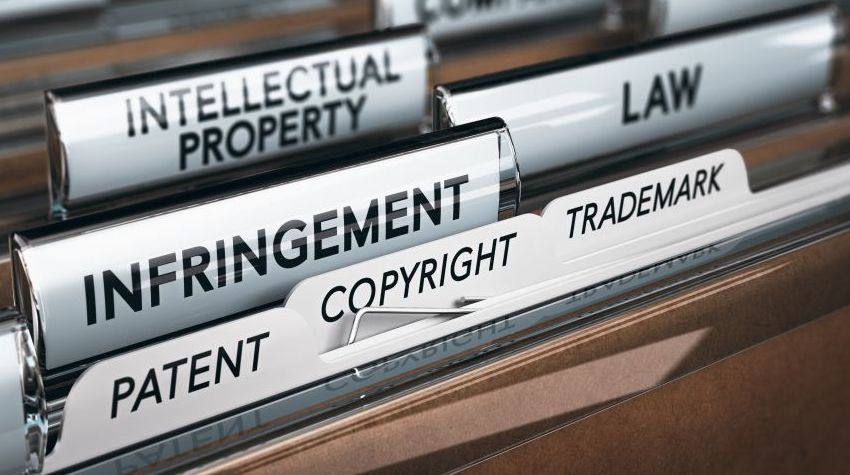
Copyright laws aim to protect the owner, but some copyright restrictions can differ country-to-country, depending on the copyright office.
This is why you should specifically research the laws in your own business location and note the severity of the offense and how likely it is that an infringement may occur.
For a t-shirt printing business in the US, go to the official dedicated copyright government website, under title 17, for any specific legal rules.
For copyright laws in other countries, check the associated material:
Focus on creating original designs from scratch

The best tip that we can give to limit any designers or business owners from mistaken copyright infringement lawsuits is to create your own t-shirt, plain and simple. Avoid derivative work and make original designs that are unique.
This, of course, is easier said than done, but there are platforms and tools, both free and paid, that can reduce your workload, especially for a cash-strapped small business.
Let’s go over some options:
- Create your own designs using dedicated graphic software that exports high-quality images ready to be printed. Start with the top 11 t-shirt design software.
Or, check out our list of free Photoshop alternatives to design your own t-shirt graphics without additional expenses. - Hire a freelance designer using a third-party platform or the Printify Experts Program. Use websites like Upwork or Fiverr to browse professionals that freelance anything from graphic art to logos and slogans.
Note that even original works are subject to internal website policies that may limit some instances, and would still not classify as infringing on a copyright.
To run a t-shirt brand with Printify, please familiarize yourself with our policies:
Printify’s Intellectual Property Policy
Look for public domain images and texts
If you’re not the owner of a work, you may still be able to use it. Creative work available to the public for free is considered to be in the public domain. Public domain comes into effect when a copyright license has expired or been revoked.
In other cases, a de facto public domain may exist if copyright law does not apply under the above-mentioned rules. Here are some works in the public domain, free for everyone to use:
- Text of classical literary works like Bram Stoker’s Dracula
- Images produced by NASA or other scientific bodies
- Portraits and historical figures like George Washington
- National symbols and historic iconography like the French fleur-de-lis
Note that while historical or culturally relevant works may be public domain and freely quoted, that doesn’t mean that new derivative works are public domain as well.
For instance, the animated TV show Castlevania, featuring Dracula, is considered a separate entity and is copyrighted material.
Be careful with non-human generated art
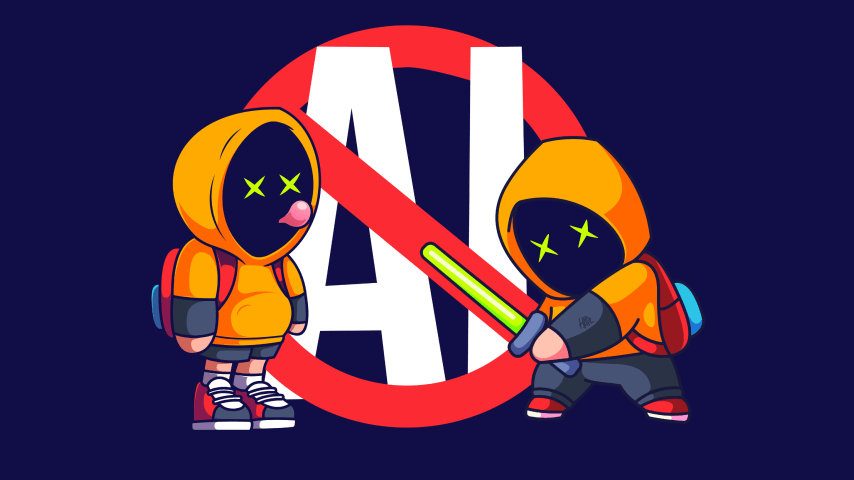
Many law schools are at odds with whether created works by non-human individuals, like a monkey taking a selfie or AI-generated art, can be considered public domain.
The trend of commercializing non-human art is still being debated, so it’s best to use caution if it’s a niche you’re interested in.
Use design elements not protected by copyright
In the definition of copyright law, some works have historic significance and are not protected or owned. You may freely use these without incurring legal issues. Copyright law does not protect:
- Ideas, facts, and concepts
- Discoveries and principles
- Short titles and slogans
- National symbols like flags or coats-of-arms
- Non-tangible creations like a sketch or exclamation
- Common property works like calendars or the alphabet
- Utilitarian symbols like traffic signs or emergency graphics
- Simple shapes, letters, colors, and their variations
Check if royalty-free images can be used commercially

Royalty-free means that anyone who intends to commercialize an image can do so by paying a small one-time fee without having to pay for each derivation thereafter.
Some royalty-free images can be completely free, but this isn’t always the case. Either way, the author should still be credited, and you should double-check the policy.
Here are a few free stock image websites that graphic designers can explore to browse and download royalty-free images for commercial use:
If you have the budget, you can try paid resources like Adobe Stock with a more robust catalog of royalty-free images. Note that images in Adobe Stock marked “editorial use only” cannot be used commercially. You might also need an Extended License to create merchandise for resale purposes.
Shutterstock is another great option for paid, royalty-free images. Printify has partnered with Shutterstock to create a simple-to-use integration through our Product Creator (formerly known as Mockup Generator) software, with images that can be used commercially.
Receive permission from the copyright owner
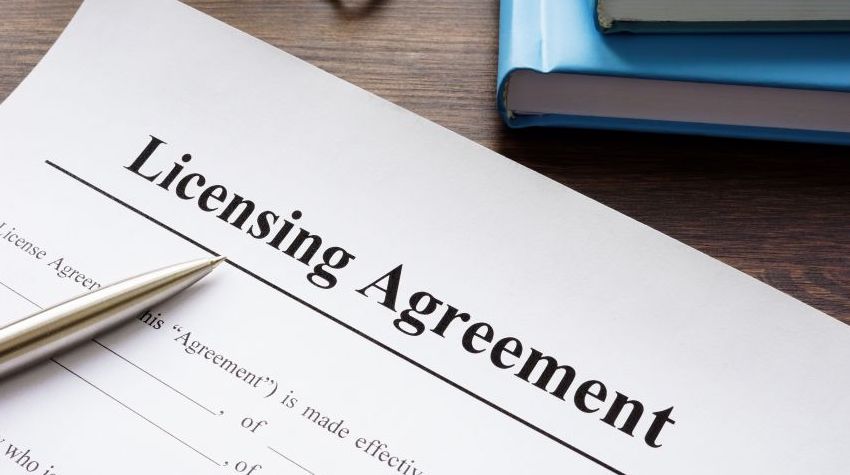
You can still sell t-shirts with copyrighted images, provided you gain permission from the author. Always maintain decorum and ask for permission before using anything you see on the internet.
You may be able to pay for a potential t-shirt design if you are familiar with the owner of a work, ready to credit them as the artist, and willing to contact them with transparent information about the image’s use.
If the person agrees, consider creating a licensing agreement.
A copyright licensing agreement provides the licensee with a legally enforceable right to use a work for a designated purpose, time period, and cost.
You can download a template for a licensing agreement online. Make sure the form has space for the following:
- Payment schedule
- Renewal dates
- License definition
- Exclusivity information
- Explicit use for the creative work
- The names and information of both parties
Start with some research to find out whether you can commercialize a potential t-shirt design. The easiest way is to use an online reverse image search for a photo, checking the earliest upload of the work and finding out who posted it first. From there, contact the individual through any channels available, and consult them on the matter.
Make it happen today!
T-shirt copyright infringement: What not to do
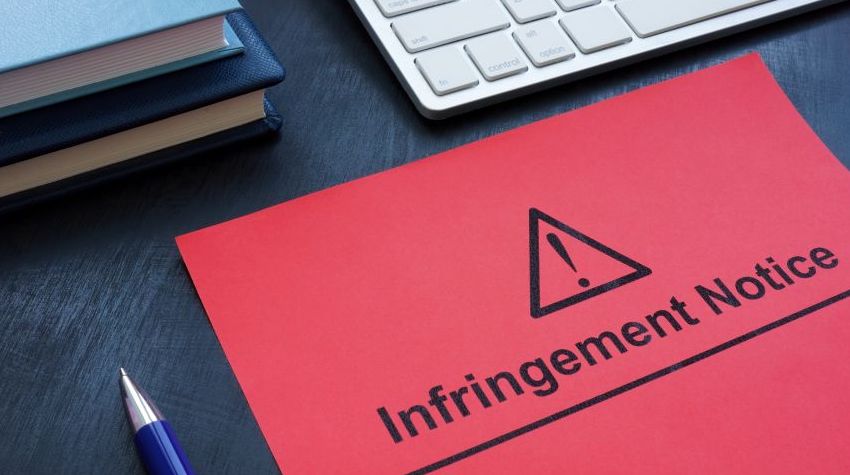
To start, assume everything is copyrighted. Do not take a random image off Google, expecting to avoid copyright infringement. Be safe, and take stock of some things you should absolutely avoid.
Don’t use branded logos
Using exclusive branded staples like the Nike logo is a no-go. Creating bootleg or inspired brand iconography is a surefire way to alienate your customers and get hit with a hefty lawsuit.
Don’t reverse, distort, layer, color code, or otherwise manipulate a brand, thinking it’s enough to count as an original. Cutting corners will decrease the value of your own brand and put you in second place by default.
Don’t use quotes
If speech has been recorded, placed in writing, used as a slogan, or repeated in online public discourse, do not use it as a text quote for your t-shirt. Except for public domain quotes, when a work is fixed in a tangible form, you cannot use it commercially.
Don’t use branded fonts
You might see a lot of reviewers or fan-made merchandise use the font from the originally created work. It’s familiar and easily recognizable, but that’s also what makes it a copyright infringement liability. For instance, don’t use the Stranger Things title case or the Star Wars intro roll to design t-shirt graphics.
Don’t use cartoons
Make a clear difference between any syndicated animation stars, comic strips, or mascots. Don’t use cartoons with implicit nods to existing media in your custom t-shirt designs unless they’ve entered the public domain, like the original Winnie the Pooh.
Don’t use memes
While it might seem that a picture plastered and circulated throughout the internet would be completely fair use, memes aren’t as big of a trend and money-making scheme as they may seem.
When it comes to commercializing, many memes are already taken from other media and fall under protected copyright law, whether it’s another still from SpongeBob or a character from one of Vince Gilligan’s syndicated tv-shows.
Don’t use pictures of celebrities
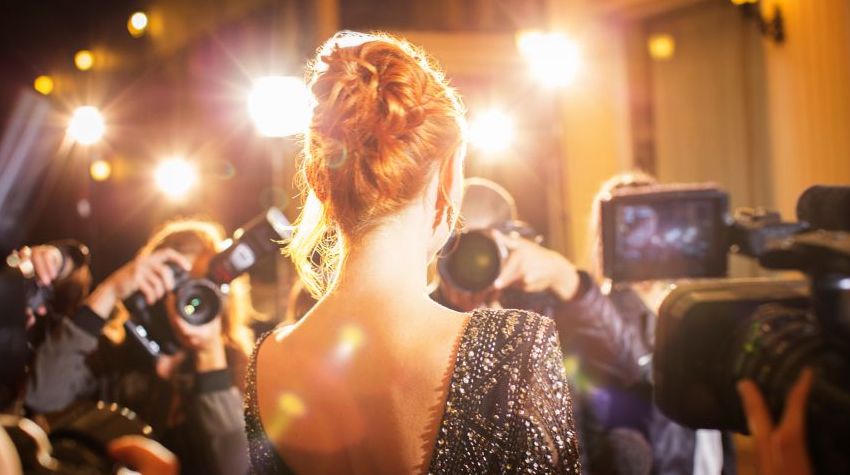
You’d think that pictures of celebrities are a bad idea due to celebrities and their high-ticket defamation cases. Still, the actual worry in your t-shirt design comes from the person who took the photo. They are generally the rights holders.
Conclusions
Let’s end with some free legal advice. Copyright law is easy if you follow your own vision and create a t-shirt business that’s original and unique. Copyright is hard if you stray the lines, cut corners, and try to make exceptions.
Search engines and creative commons are your friends. Find inspiration online by crediting and working with an artist or owner, playing with facts and ideas, and not using graphic elements of a different t-shirt designer.
Lastly, find free graphic design ideas through Printify. Try your hand at creating custom t-shirts through our easy-to-use design tools and free-to-use graphics library – collected and sourced to make your t-shirt design business run smoothly.



